Starting a logistics business in Antarctica offers a special chance. It combines supply chain needs with the extreme conditions of the Earth’s coldest place. This guide highlights the important role of logistics in aiding scientific studies, tourism, and managing supplies in remote areas. Entrepreneurs will learn about the advantages and challenges of setting up such a business in Antarctica.
Understanding the Opportunities in Antarctic Logistics

Antarctica’s logistics market is full of opportunities due to the unique needs of research, tourism, and industry. The growth of scientific research means more goods need transporting to research stations. This need creates big chances for specialized companies to meet the region’s logistics challenges.
Tourism logistics is also growing fast. With more tourists heading to Antarctica, there’s a bigger need for strong supply chains. These support the hospitality sector and ensure tourists can go on excursions. This situation offers logistics firms a chance to work with tourism businesses, improving their services.
Government investments in science and environmental research also shape the Antarctic supply chain. International collaboration, guided by the Antarctic Treaty System, makes sure logistics follow environmental rules. This can make businesses in this area more appealing.
In summary, the rising interest in scientific research, the growth of tourism, and government cooperation all boost Antarctic logistics. Strategic positioning allows companies to build an efficient, tough logistics network in this difficult setting.
The Essential Steps to Starting Your Logistics Business
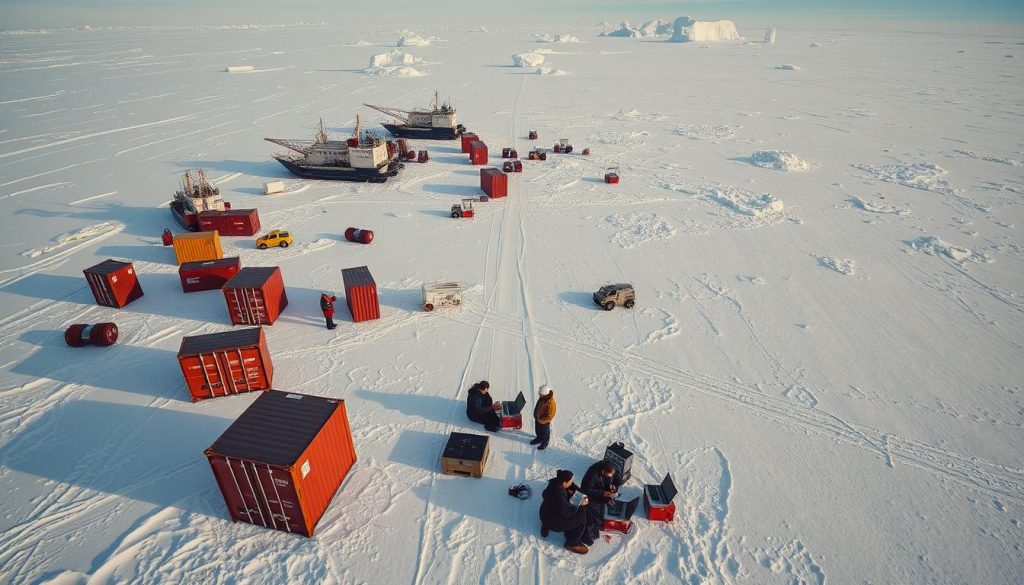
Starting a logistics business in Antarctica requires careful planning. Knowing the key steps is crucial for success. A structured approach helps overcome the unique challenges there.
Conducting Market Research
Doing thorough market research is key. It means analyzing the market, identifying potential clients, and assessing competitors. Knowing demand and service gaps places your business in a strong position. Surveys and talking to local businesses provide needed insights.
Creating a Business Plan
A detailed business plan is your guide. It outlines your goals, how you’ll operate, and your financial plans. It’s important to define your niche, set prices, and plan marketing. Including how to handle risks prepares you for challenges.
Registering Your Business
Registering your business requires following many rules. You’ll pick a legal structure, get permits, and meet tax requirements. A registered business is seen as credible. Make sure all your papers are correct to avoid start-up delays.
How to Start a Logistics Business in Antarctica
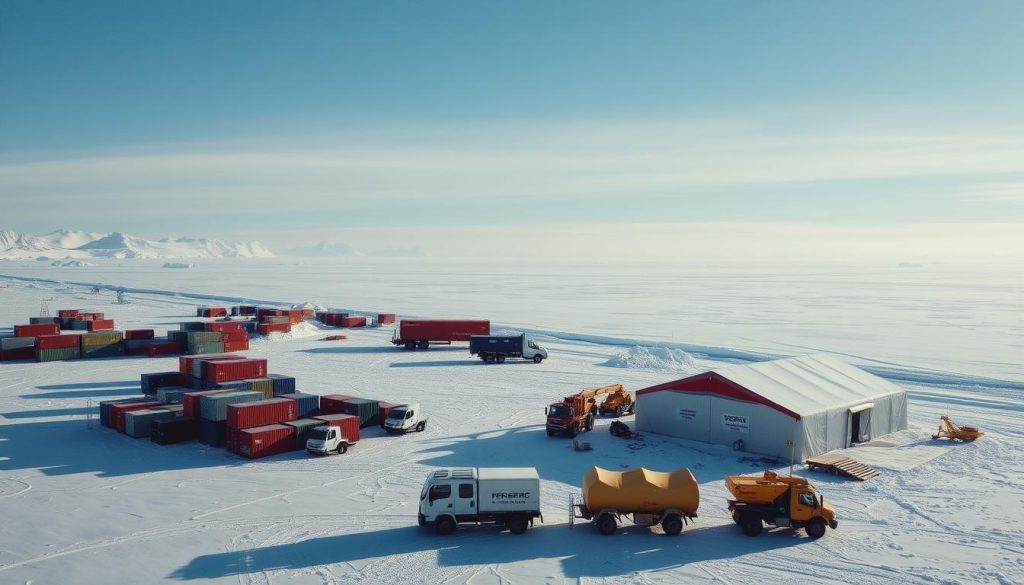
Starting a logistics company in Antarctica needs careful planning. First, get the necessary permits from relevant bodies. This step is key for legal operation. Understanding the logistical layout is vital too. Each region in Antarctica has its own transport network. This impacts how items are moved and kept.
Finding reliable suppliers is another crucial step. They must provide what’s needed for your business. Also, building relationships with other logistics firms, research bodies, and government agencies helps. It makes operations run smoother and more efficiently in Antarctica.
The weather is a big factor to consider. Antarctican weather changes abruptly and can affect logistics. Having backup plans is a must. This preparation helps keep operations strong despite challenges. Starting your logistics business in this unique place means planning for these changes.
Regulatory Considerations for Operating in Antarctica

For anyone wanting to start a business in Antarctica, knowing the rules is key. The Antarctic Treaty and related protocols are the main rules everyone follows there. You must follow these rules to succeed.
Before starting, entrepreneurs need to think carefully about how their business might affect the environment. This step is crucial to make sure their business helps preserve the area. Ignoring these rules could lead to big fines and harm your business.
National authorities check if companies follow the rules, giving out needed licenses. Following the rules not only makes operations go smoothly but also shows you care about the environment. This is important in such a delicate place like Antarctica.
- Familiarise yourself with the Antarctic Treaty System
- Understand the environmental impact assessment process
- Obtain necessary licenses from national authorities
- Adhere to strict environmental guidelines
Doing well in Antarctic logistics requires careful understanding and following of these rules. Being known for sticking to the rules helps build a strong, growing business.
Building a Robust Business Plan for Your Logistics Venture
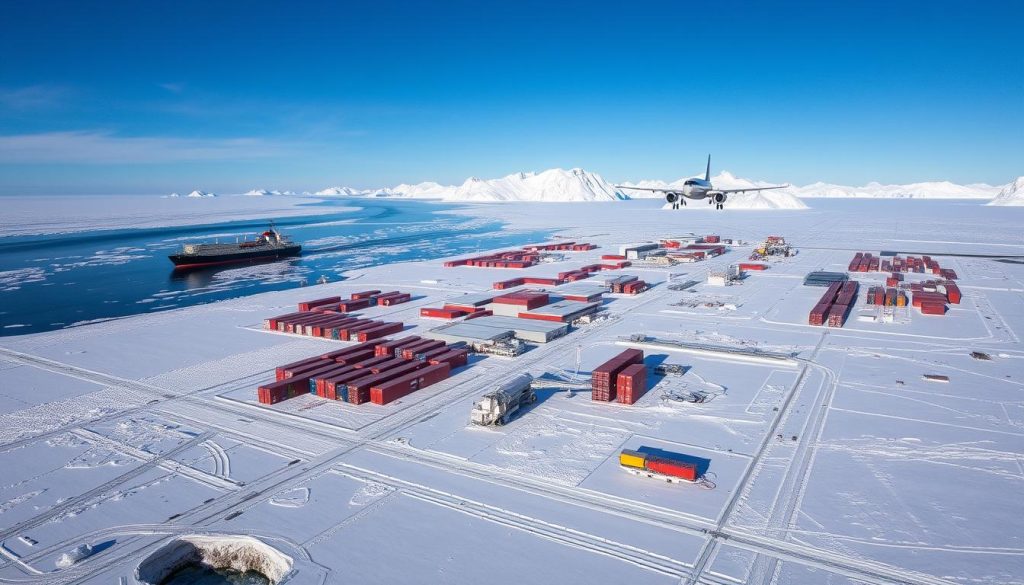
Creating a detailed business plan is key for anyone starting a logistics business in Antarctica. It outlines your organisation’s goals and strategies. It also helps to attract potential investors and secure funding. A successful plan covers several important areas:
- Market Analysis: Knowing the Antarctic market’s challenges and opportunities is crucial. It helps plan your logistics venture precisely. Finding out about competitors, customer needs, and market trends guides your strategic choices.
- Financial Projections: Showing expected revenues, costs, and profits demonstrates your business idea’s financial health. This aspect of the plan highlights the economic promise of your Antarctic endeavour.
- Operational Plans: Detailed explanations of logistics, supply chain management, and on-site operations boost efficiency and reliability. Such plans are key for smooth operations.
- Marketing Strategies: A well-thought-out approach to reaching your target market is vital. Effective marketing strategies ensure your venture stands out in the niche Antarctic market.
Looking at examples of successful logistics business plans can offer great insights. These examples show how common strategies work in practice. They can be tweaked for the unique needs of Antarctic logistics. A thorough business plan is critical for overcoming the region’s logistical challenges.
Key Logistics Challenges in the Antarctic Environment

Working in Antarctica comes with tough logistics challenges that need careful planning. The extreme weather often disrupts transport, causing delays in the supply chain. For businesses aiming to work in this remote area, it’s vital to know these challenges well.
Getting to some places is very hard, especially in the cold winter months. This makes it important to find creative ways to ensure necessary goods get to remote research stations. It’s crucial to manage the stock well, especially for items that can go bad quickly.
Fuel supply management is another big issue, with a strong focus on reducing environmental harm. Maintaining operations without hurting the environment is key. Proper waste management is also essential to keep the area clean and safe. By facing these challenges head-on, we can develop sustainable plans suited for Antarctica.
Finding Your Target Market in the Antarctic Region
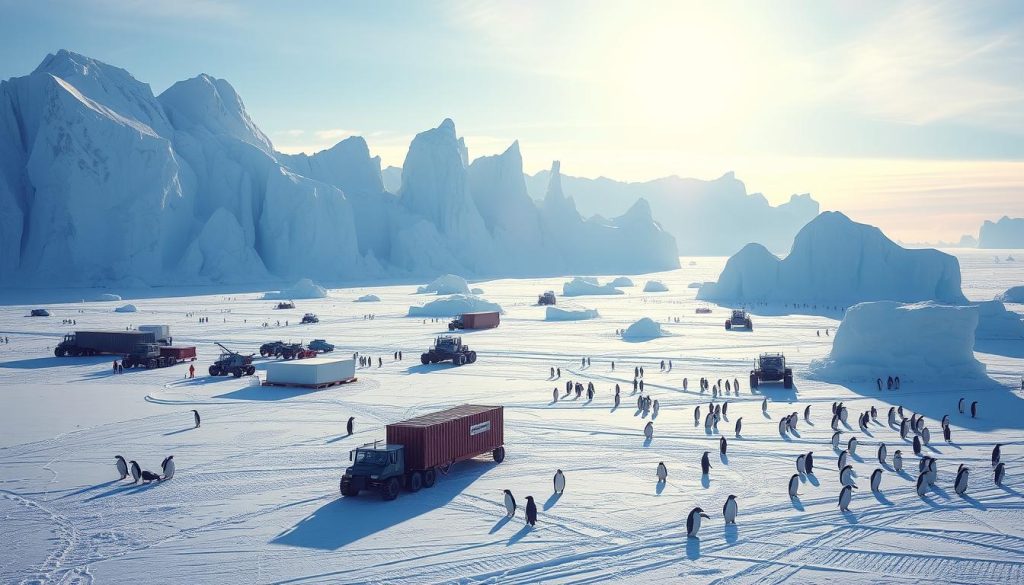
Understanding the logistics of your target market in Antarctica is key. This icy terrain offers distinct challenges and opportunities. Knowing what different groups need helps you succeed. Potential customers include:
- Governmental research institutions that conduct scientific studies.
- Private companies involved in exploration and natural resources.
- Tourism operators catering to adventure tourism and eco-tourism.
To effectively identify these clients, conduct comprehensive market research. Use surveys, interviews, and data analysis for deeper understanding. This helps meet each sector’s specific logistics needs. Building close customer relationships enhances satisfaction and loyalty.
Developing strong connections with key stakeholders is crucial. It shows you value understanding their unique logistics requirements. Over time, this leads to lasting partnerships. These are essential for growth and success in Antarctica’s tough environment.
Essential Equipment and Technology for Logistics in Antarctica
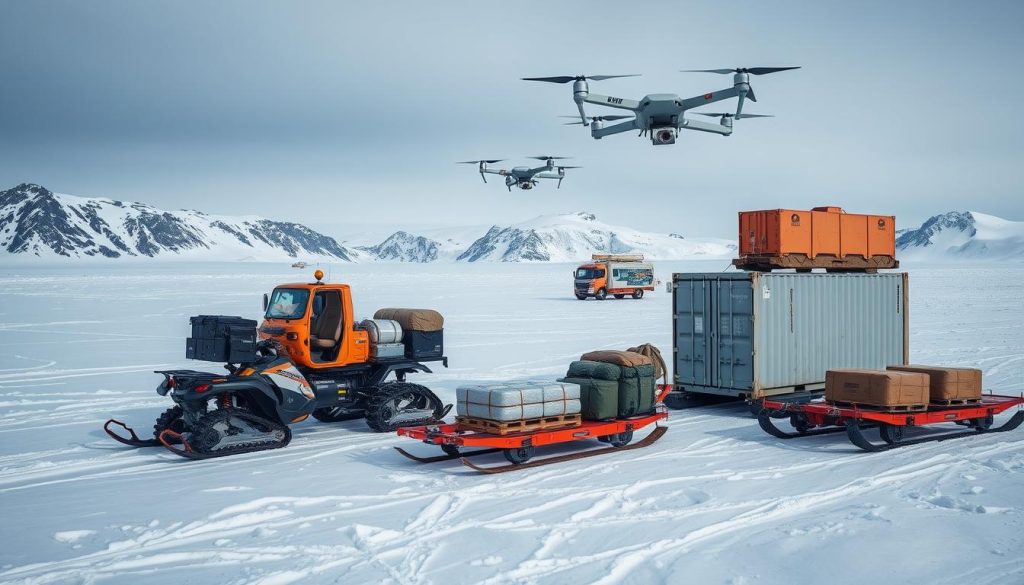
In Antarctica, logistics equipment is critical for business success. The extreme cold and unpredictable weather demand special technology. This technology helps manage the challenges of moving goods efficiently.
Some vital tools for Antarctic logistics are:
- Special vehicles like ice trucks and snowmobiles, made for the rough ground.
- Ships that can break ice to move safely in icy waters.
- Aircraft that can take off and land quickly, reaching faraway spots.
- Storage that keeps temperature-sensitive items safe.
Good communication is key in managing logistics. Satellite systems offer constant contact. This keeps everyone updated on where the goods are. Advanced tracking lets businesses watch their operations closely.
Buying the right equipment helps in dealing with Antarctica’s challenges. When managed well, this technology improves how companies work. It helps them adjust quickly to the unique Antarctic environment.
Choosing the Right Transportation Methods
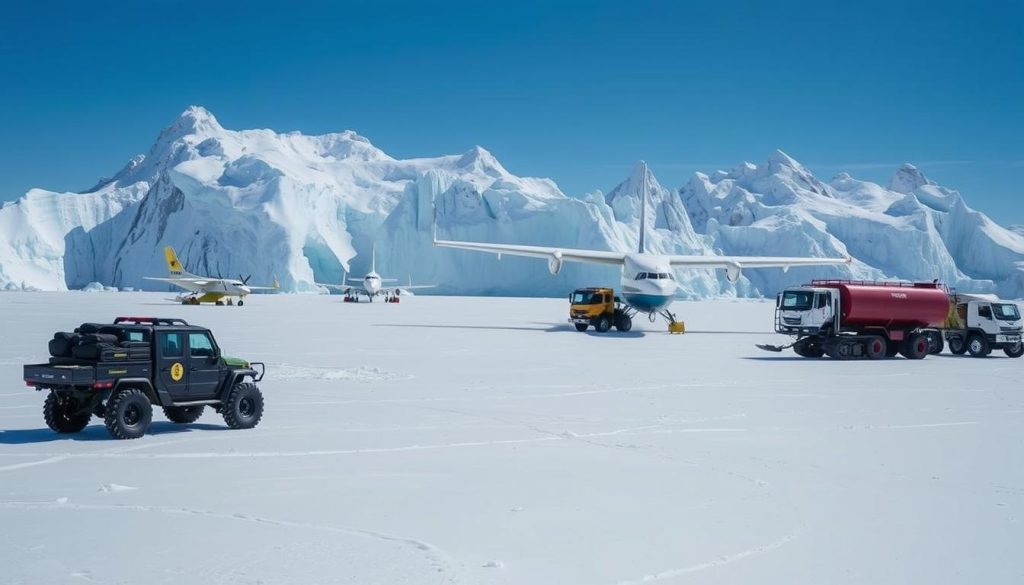
Transporting goods to Antarctica poses unique challenges. The cold weather and unique landscape require careful choice of transportation methods. You can choose from sea freight, air freight, and ground transport.
Sea freight is often used for shipping large amounts of cargo. Ships designed to withstand icy waters are used. This is cheaper for big items but might face delays due to the weather.
Air freight is perfect for urgent deliveries. It is fast, ideal for delivering research supplies and for emergencies. However, it costs more than sea transport.
For ground transport, special vehicles are necessary. They are vital for moving goods across Antarctica. Choosing the right equipment is key to efficient and safe delivery.
- It’s critical to consider how soon you need your shipment when choosing between air and sea transport.
- The type of cargo helps decide the best transport method.
- Knowing the limits of each method helps avoid operation problems.
In conclusion, picking the right transport methods is crucial for logistics in Antarctica. Each method has its pros and cons. A balanced approach is essential for efficient operations.
Staffing Your Logistics Operation in Harsh Conditions

Running a logistics business in Antarctica brings unique staffing challenges. It’s key to find people experienced in extreme conditions. Engineers, operation managers, and environmental scientists are especially important for top results.
Keeping your Antarctic team safe and well is a top concern. The tough conditions can cause stress and tiredness. It’s crucial to train everyone well on safety and how to respect the environment. This training prepares them for the challenges of such a remote place.
Building a strong team is vital in the Antarctic’s isolation. Holding regular team-building activities can create a tight-knit group. This boosts morale and work output. It’s also important to have flexible schedules and clear ways to talk to each other. These factors help keep the atmosphere positive.
- Hire individuals with relevant experience and training.
- Provide thorough safety and environmental training.
- Foster team cohesion through engagement activities.
- Monitor and support mental health and well-being.
The Importance of Sustainability in Antarctic Logistics
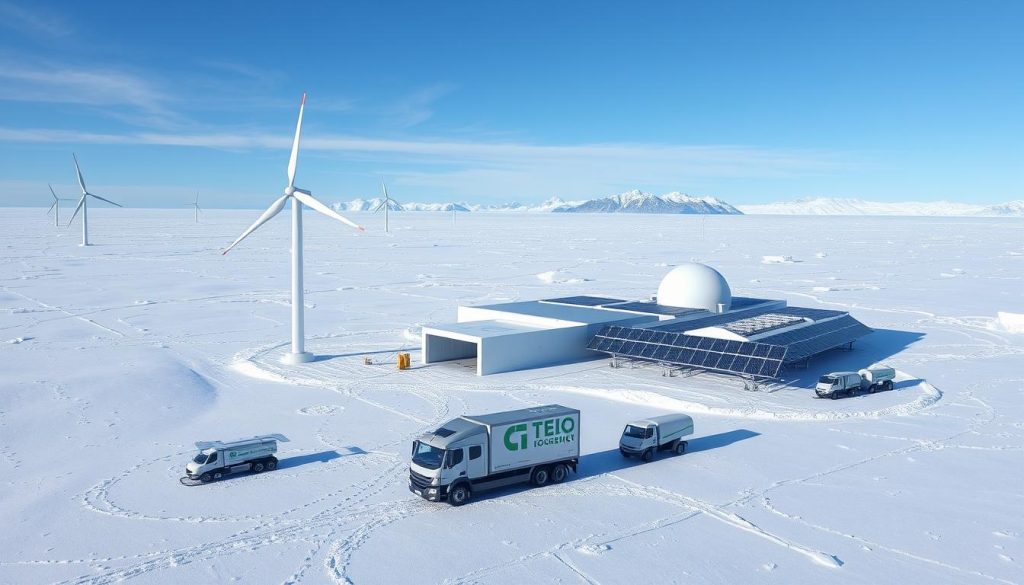
Sustainability in logistics in Antarctica is key to protecting its fragile ecosystem. Businesses there must use green methods to lessen their harm to the environment. This includes cutting down carbon emissions and managing waste wisely.
To be sustainable in Antarctica, companies can do a few important things:
- Use transport options that save energy
- Bring in renewable energy sources when they can
- Use tech to find the best routes and combine shipments
- Educate their teams on how to work without harming the environment
Many companies in Antarctica show how creativity can lead to sustainable practices. By focusing on green operations, they not only protect our planet but also become more attractive to customers who care about the environment. Their work inspires others and shows how sustainability can work in tough places like Antarctica.
Mentorship and Networking for Aspiring Entrepreneurs
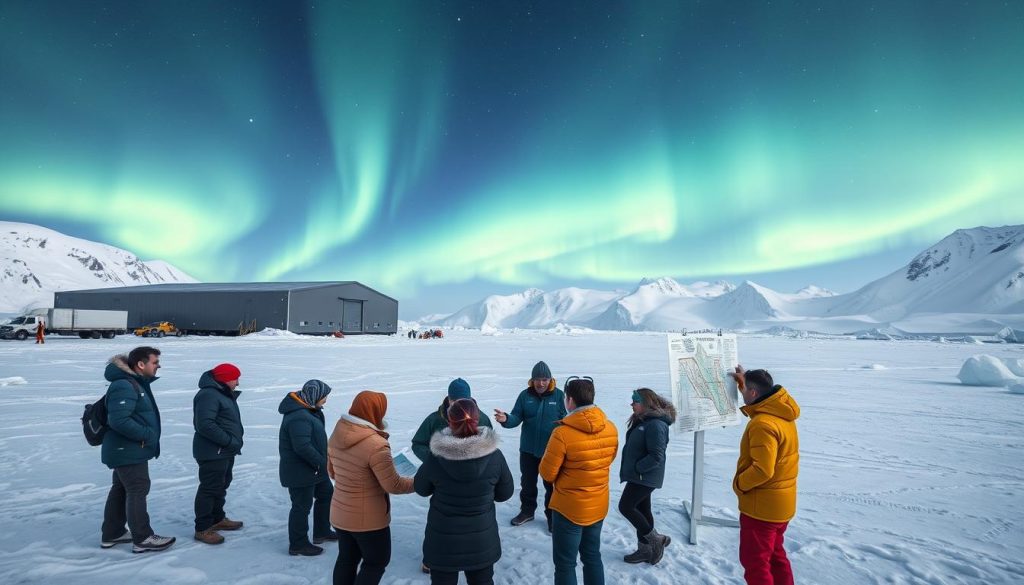
Starting a logistics business in Antarctica requires more than a good plan and tools. It needs strong relationships and advice from those who know the ropes. Mentorship is key in understanding the complex world of Antarctic logistics. Getting insights from mentors aware of the region’s challenges can be very helpful.
It’s vital for entrepreneurs to network within the industry. Sites like LinkedIn help connect with seasoned Antarctic professionals. Going to related events provides a chance to meet experts in person, which might lead to important collaborations.
Making connections in Antarctica goes beyond talking to other business owners. Working with government bodies and schools can boost your credibility and knowledge. Such partnerships are great for sharing advice and tackling the unique problems faced in this distant area.
- Join industry-specific forums and groups to discover potential mentors.
- Attend conferences devoted to Antarctic environments aimed at logistics professionals.
- Leverage social media to initiate conversations and build a network.
- Establish relationships with educational faculties conducting research in Antarctica.
Funding Your Logistics Business: Options and Resources
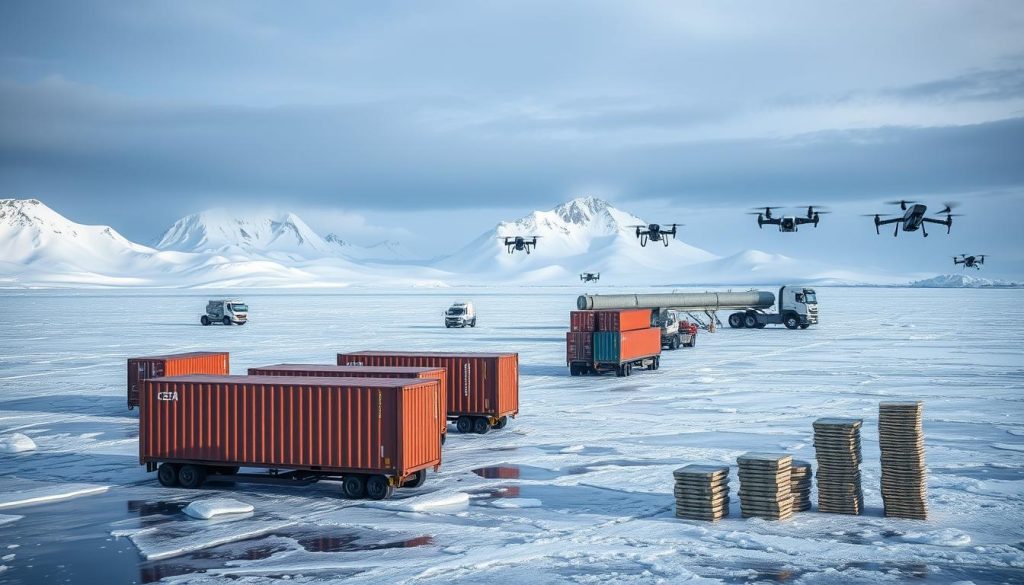
Starting a logistics business in Antarctica needs careful money planning. There are many ways to fund your venture in this unique place. Knowing how to get these funds is key for success.
Here are some possible funding sources:
- Government and Antarctic grants that help logistics businesses focusing on being green and research.
- Private backers who want to invest in logistics that help save the planet.
- Loans from banks with special terms for companies in tough environments.
To get funding, you must write an impressive proposal. Talk about what makes your logistics business different, like its green efforts and ties to research. A strong business plan improves your funding chances.
Researching financing options logistics thoroughly helps business starters in Antarctica. Knowing about funding chances both locally and globally is crucial for long-term success in this special area.
Marketing Strategies for Your Logistics Company
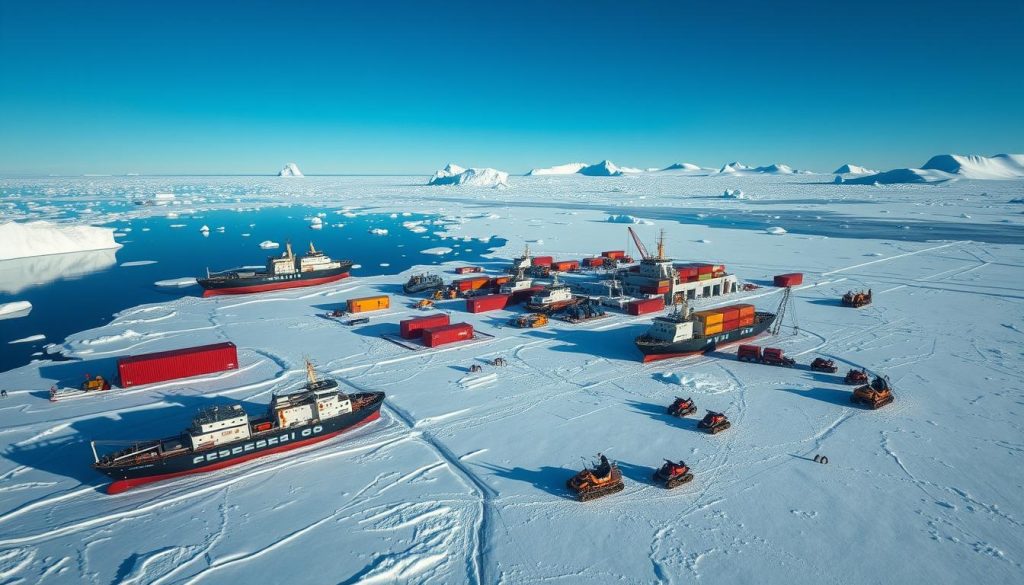
In the competitive Antarctic logistics market, creating powerful marketing strategies is key for success. Owners can use many methods that highlight their company’s special features.
Digital marketing is vital for promoting a logistics firm. A prominent online presence boosts visibility and helps connect with potential clients. Using SEO strategies can improve your chances of being found by businesses seeking logistics in Antarctica.
It’s also important to maintain good relationships with important partners. Connecting with government bodies, research groups, and tourism companies can open doors for joint projects. Going to networking events and trade shows lets you meet industry leaders and build trust.
- Implement targeted social media campaigns.
- Leverage email marketing to maintain communication with clients.
- Develop informative content that positions your brand as an industry leader.
Marketing in Antarctica should emphasize dependability and sustainability. Companies ought to share stories of their logistics successes, showing how they tackle the region’s challenges. Showing commitment to protecting the environment can make your brand more appealing to stakeholders.
Case Studies of Successful Antarctic Logistics Operations
Looking at Antarctic logistics case studies shows what makes them work well in tough spots. One key example is the British Antarctic Survey teaming up with logistics partners for the best operation. They plan carefully and manage supplies well, showing good practices for up-and-coming business folks.
Another winner in the logistics field is Aker Solutions. They’ve adjusted well to Antarctica’s unpredictable weather. By using new technology and working closely with locals, they’ve overcome many challenges. This case shows how being flexible helps in tough conditions.
These examples prove that entrepreneurs can succeed in Antarctic logistics. They teach us about the challenges but also the smart choices that lead to success. They stress the importance of sticking to sustainable and excellent operations for future projects.
















